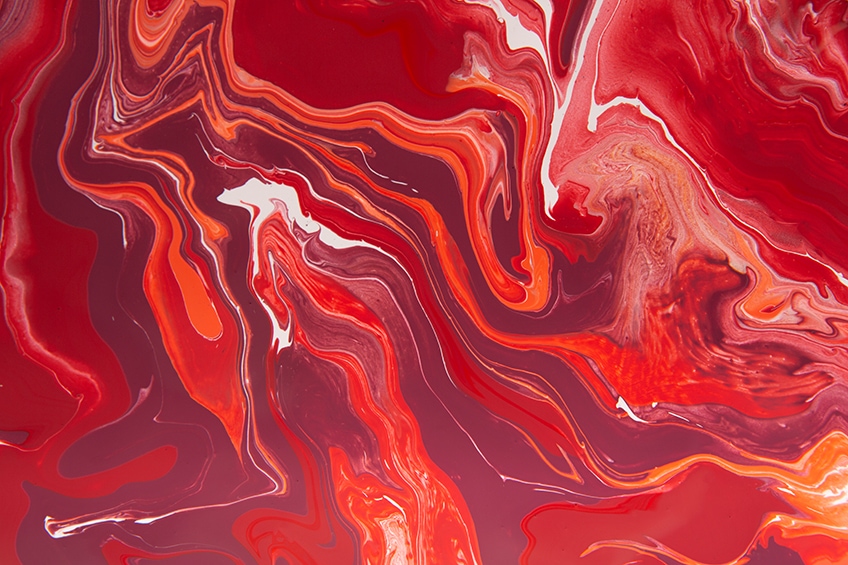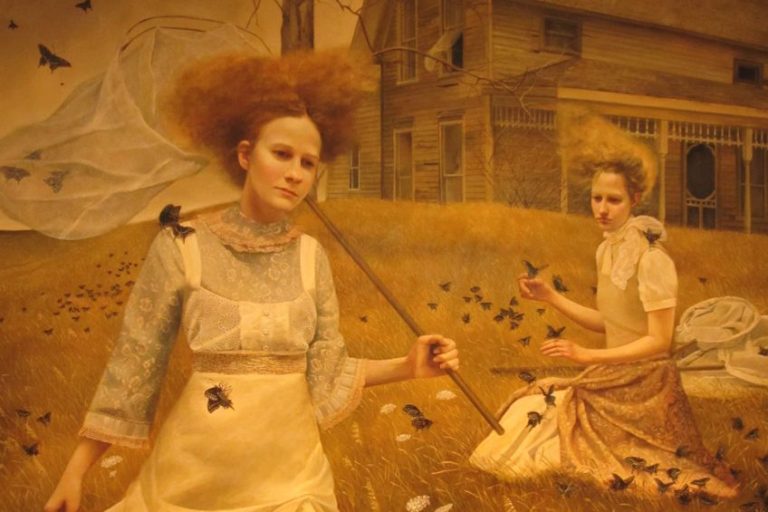Jules Olitski – Exploring the Most Notable Jules Olitski Paintings
Jules Olitski was a multi-disciplinary artist, delving into the fields of painting, sculpting, and printmaking. As one of the forerunners of pioneering and experimenting with different art techniques during the 1950s, he is a notable key figure within the art world. We will take a closer look at who Jules Olitski was and the artworks he created.
Jules Olitski Biography
Jules Olitski’s original name was Jevel Demikovsky, and he was born in the Ukranian city Snovsk on 27 March 1922. He did not know his father, who was killed while serving for the army in Russia. He is mostly regarded as an American artist, having emigrated to Brooklyn, New York in 1923 with the remainder of his family members, namely, his mother and grandmother.
Education and Career
Jules Olitski grew up with an interest in art, especially drawing, which eventually led him to take art classes during his school years. He received a scholarship to the Pratt Institute, a private university. He also studied at the National Academy of Design and the Beaux Arts Institute, both in New York, during the early 1940s.
During the years 1949 to 1951, Olitski stayed in Paris and studied at two institutions, namely the Ossip Zadkine School and Académie de la Grande Chaumière. In 1952, when he was back in New York, he completed a Bachelor of Arts and his Master of Arts (in Art Education) two years later. He also taught at the C.W. Post College in the Fine Art Department, where he started in 1956 and stayed for seven years. Olitski’s teaching career continued during 1963 and 1967 at Bennington College in Vermont.

Exhibitions
Jules Olitski had over 100 exhibitions over the course of his art career. His first exhibit was in 1958, a solo exhibit at the Alexander lolas Gallery. This led him to exhibit at the French and Company Gallery in 1959, facilitated by well-known art critic and writer, Clement Greenberg, who he met at his solo exhibition. With exhibitions all over the United States, Olitski also exhibited internationally, namely the Carnegie International and, in 1966, the Venice Biennale, for which he represented the United States with a few other American artists. Another notable solo exhibit was during 1969 at the Metropolitan Museum of Art (MET).
Jules Olitski Art
There have been several evolutions of styles when it comes to Jules Olitski paintings. In fact, the artist is remembered as someone who explored many various media and artistic techniques. His early works portrayed abstracts with dense and thick layers of paint applied to the canvas, referred to as impasto. During the early 1960s, Olitski’s artworks took a turn, and he started applying paint onto surfaces in thinner layers, including spray paint. Below, we look at some notable characteristics and styles developed by Olitski, as well as several of his key artworks.
Early Influences
It is important to note the Jules Olitski paintings were influenced by Abstract Expressionism, one of the prominent art movements in New York during the 1950s. His early works depicted the abstracted styles we see from this art movement, with influence from early pioneers like Hans Hofmann.
Olitski was regarded as one of the forerunners of the Color Field Painting movement, which was a reaction towards the more gestural manners in which earlier Abstract Expressionists painted.
Post-Painterly Abstraction and a Spray Gun
Olitski soon pioneered a new type of painting style as a reaction to the overly figurative styles of the Expressionists. He joined several other artists, namely Helen Frankenthaler, Ellsworth Kelly, and Morris Louis, and pioneered the art movement called Post-Painterly Abstraction. It was Clement Greenberg who coined this term for an exhibition of artists who displayed works that went against the “Painterly Abstraction”, as he referred to it, of Abstract Expressionism.
One of the primary techniques of Post-Painterly Abstraction was stain painting. Olitski started by pouring acrylic pigment onto the canvas and letting it dry. He also used paint rollers on the canvas to produce various effects. During 1965, Olitski began experimenting with spray guns, such as applying paint to canvases without priming them.
This became one of Olitski’s most famous techniques, as it allowed the artist to explore new ways of applying paint, but especially exploring colors on the canvas. The artist also explored the dynamics of color and its richness, and the effects created on the canvas versus how other art movements focused on creating depth. Olitski completely removed all traces of depth.
Art critics like Michael Fried described Olitski’s work and interpretations of color on canvas as not only “atomizing color”, but also the “picture surface”.
Major Artworks
Below, we look at several key artworks done by Jules Olitski and how his use of color and texture created a complete shift of meaning and perspective, literally and figuratively, on the canvas and off.
In Memory of Slain Demikovski (1958)
In honor of his father’s memory, we see Olitski’s earlier techniques of applying paint in thicker bands of color and textures. Using acrylic resin and dry pigment, the left side of the composition is dominated by light gray with what appears to be a figure to the right. The colors create a more serious and somber feel to the painting compared to Olitski’s later works.
Cleopatra Flesh (1962)
This painting is composed of only four colors – blue, black, red, and beige – arranged in circular shapes, seemingly wrapped up in the other or moving out of each other, almost like a cell under a microscope. This composition is one of Olitski’s stain paintings with paint poured onto the canvas. No brushwork is apparent, although the path of pouring the paint still shows the intentional movement from the artist.
Thin Lizzie Green (1964)
This painting is an example of one of Olitski’s canvases using a paint roller. We see a strip of darker red at the top with a vertical unbroken band of green moving all the way down. This, in turn, is diluting the red at the top and creating a thinning effect on the canvas, especially when compared to the thickness of the impasto method seen in Olitski’s earlier paintings.
Patutsky in Paradise (1966)
This (spray) painting is considered to be one of Olitski’s most famous works showcasing his new technique using the spray gun. His goal for this was to create new sensations of experiencing paint, specifically the effect of floating – hanging “like a cloud” – and moving beyond the flatness of the canvas. This composition does not suggest any involvement of the artist’s brushwork or handiwork as we see from his earlier piece, Cleopatra Flesh. The colors are vibrant with bright pinks, oranges, and greens, which may indicate a feeling of paradise.
Remembering Jules Olitski
Olitski returned to using the impasto technique during the 1970s, but his experimental spirit never changed as he started experimenting with gel acrylics and other substances like polymers. During the late 1990s into the 2000s, Olitski painted images taken from the landscape around him where he lived at the time by Bear Island. He produced a series of paintings titled With Love and Disregard (2002), which depicted stronger color contrasts with dynamic flows of forms and shapes.
Jules Olitski was a pioneering artist who always innovated with his media and subject matter. Although he received criticism for moving away from his unique signature spray-gun paintings, he nonetheless continued making art on his terms, whether it was abstract to landscape, or acrylic to watercolors, which he explored later in his artistic career.
However we choose to remember Jules Olitski, we cannot forget the importance of always experimenting to find new ways of making art and seeing life.
Isabella studied at the University of Cape Town in South Africa and graduated with a Bachelor of Arts majoring in English Literature & Language and Psychology. Throughout her undergraduate years, she took Art History as an additional subject and absolutely loved it. Building on from her art history knowledge that began in high school, art has always been a particular area of fascination for her. From learning about artworks previously unknown to her, or sharpening her existing understanding of specific works, the ability to continue learning within this interesting sphere excites her greatly.
Her focal points of interest in art history encompass profiling specific artists and art movements, as it is these areas where she is able to really dig deep into the rich narrative of the art world. Additionally, she particularly enjoys exploring the different artistic styles of the 20th century, as well as the important impact that female artists have had on the development of art history.
Learn more about Isabella Meyer and the Art in Context Team.
Cite this Article
Isabella, Meyer, “Jules Olitski – Exploring the Most Notable Jules Olitski Paintings.” Art in Context. April 19, 2021. URL: https://artincontext.org/jules-olitski/
Meyer, I. (2021, 19 April). Jules Olitski – Exploring the Most Notable Jules Olitski Paintings. Art in Context. https://artincontext.org/jules-olitski/
Meyer, Isabella. “Jules Olitski – Exploring the Most Notable Jules Olitski Paintings.” Art in Context, April 19, 2021. https://artincontext.org/jules-olitski/.











